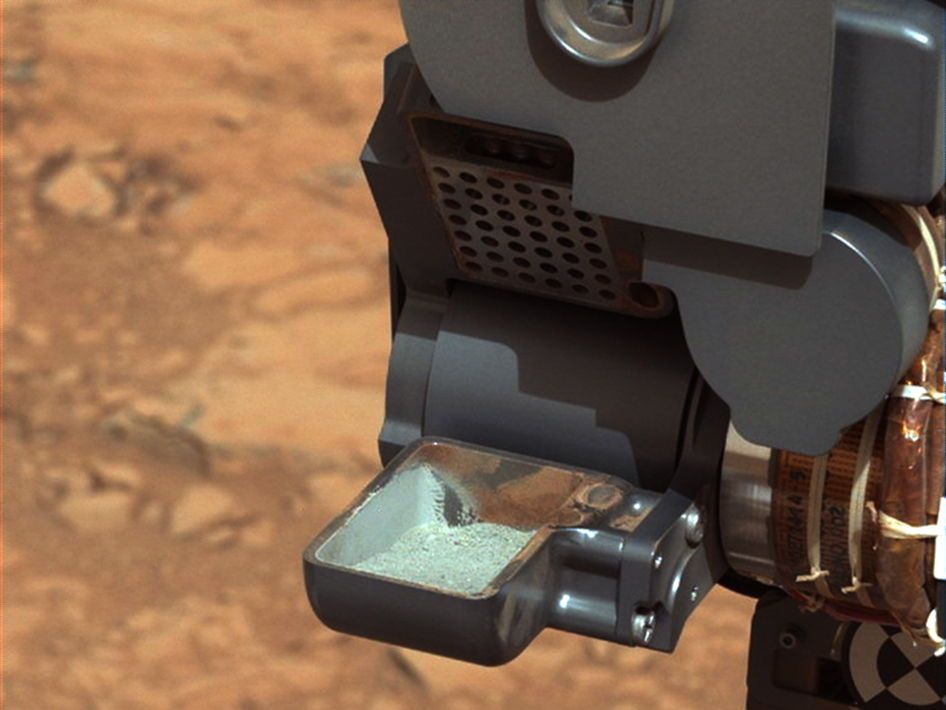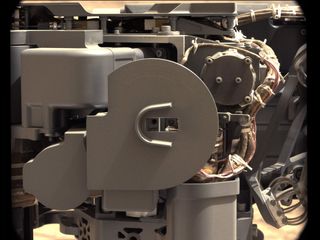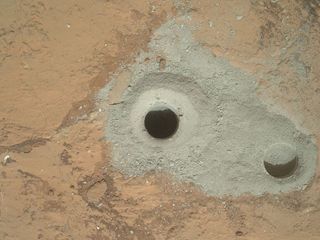NASA's Curiosity Rover Eats 1st Mars Rock Sample

NASA's Mars rover Curiosity has consumed its first samples from inside a Martian rock in order to analyze the chemistry and mineralogy of the Red Planet.
The Curiosity rover deposited the powder-like samples, drilled from the interior of the Mars rock "John Klein," into two onboard laboratories so they could be studied in detail, rover mission scientists said in a statement Monday (Feb. 25).
Curiosity's first Mars rock samples were placed inside the Chemistry and Mineralogy (or CheMin) instrument, as well as the rover's Sample Analysis at Mars instrument during a two-day operation on Friday and Saturday (Feb. 22 and 23).

"Data from the instruments have confirmed the deliveries," said Curiosity Mission Manager Jennifer Trosper of NASA's Jet Propulsion Laboratory (JPL), Pasadena, Calif.
The small Mars laboratories are built into the body of the car-size Curiosity rover. They are two of 10 instruments built to determine if Mars is now, or ever has been, capable of supporting microbial life.
Curiosity used a percussive drill mounted on its robotic arm to dig into the Mars rock John Klein on Feb. 8, revealing a surprisingly gray-colored interior of the rock. The discovery is intriguing to Mars scientists because it suggests that the rusty reddish-orange color of Mars is only skin deep.
The gray-colored rock powder "may preserve some indication of what iron was doing in these samples without the effect of some later oxidative process that would've rusted the rocks into this orange color that is sort of typical of Mars," Joel Hurowitz, sampling system scientist for Curiosity at JPL, told reporters on Wednesday (Feb. 20).
Sign up for the Live Science daily newsletter now
Get the world’s most fascinating discoveries delivered straight to your inbox.

NASA's $2.5 billion Mars rover Curiosity landed on the Red Planet on Aug. 5 to begin a two-year primary mission to study its landing site, the vast Gale Crater. The rover is currently studying the John Klein rock target as a pit stop on the way to a destination called Glenelg, which is near the base of a mountain that rises up 3 miles (5 kilometers) from the center of Gale Crater.
This story was provided by SPACE.com, a sister site to Live Science. You can follow SPACE.com Managing Editor Tariq Malik on Twitter @tariqjmalik. Follow SPACE.com on Twitter @Spacedotcom. We're also on Facebook & Google+.

Tariq is the editor-in-chief of Live Science's sister site Space.com. He joined the team in 2001 as a staff writer, and later editor, focusing on human spaceflight, exploration and space science. Before joining Space.com, Tariq was a staff reporter for The Los Angeles Times, covering education and city beats in La Habra, Fullerton and Huntington Beach. He is also an Eagle Scout (yes, he has the Space Exploration merit badge) and went to Space Camp four times. He has journalism degrees from the University of Southern California and New York University.











